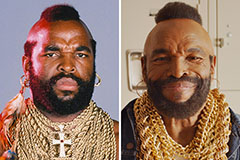From the rugged peaks thruout the Highlands to the bustling cities across, the kilt stands as a symbol showing Scottish identity. This distinctive outfit has existed for centuries, woven with threads of history. Each tartan pattern tells a story, unique to family.
A kilt's origins are shrouded in mystery. Some say it evolved from the Gaulish tunic, while more theories suggest its roots lie deeper, extending back to ancient warrior garb. Regardless of its exact genesis, the kilt has grown a cherished part of Scottish culture.
For celebrations, men don their kilts with pride, joined by sporrans and glengarries. The sight is a moving reminder of the rich heritage that Scotland contains.
However, the kilt is more than just a piece regarding clothing. It represents freedom, strength, and heritage. It's a symbol that unites Scots around the world.
Delving into Tartan's Rich History and Meaning
Tartan, with its iconic crisscrossed pattern, has a legacy spanning centuries. Originating in the Scottish Highlands, tartan was initially employed as a way to identify different clans and families. Each clan chose its own unique blend of colors and patterns, generating a symbolic representation of their identity. Over time, tartan evolved beyond its initial purpose to become a emblem of Scottish heritage and national pride.
Today, tartan remains highly favored globally. It is incorporated in a range of clothing, from traditional kilts to modern skirts. The spectrum of tartan designs, coupled with its rich history and cultural significance, makes it a captivating area of exploration.
The Classic Kilt: A Symbol of Scottish Legacy
For centuries, the kilt has stood as a venerable symbol of Scottish identity and heritage. Woven from vibrant tartans, each kilt tells a story, a testament to the rich history and clanship that define Scotland. More than just an article of clothing, the kilt is a embodiment of Scottish culture, proudly worn on formal gatherings and celebrating its traditions.
Kilts: A Timeless Symbol of Scottish Pride
From the rugged highlands to bustling villages, the kilt stands as a symbol of Scottish identity. Woven from tartan fabrics in a myriad of colours, each kilt tells a unique tale, celebrating clan history and heritage. The kilts' flowing lines capture the spirit of Scotland, its resilience and grandeur. More than just an article of clothing, the kilt is Kilt a powerful reminder of Scottish pride and cultural depth.
- Its history reaches back centuries, with roots in both tradition and practicality.
- Worn by men of all ages, the kilt is a manifest symbol of Scottish identity at celebrations worldwide.
- No matter the occasion, the kilt inspires a sense of belonging to Scotland's past and present.
Embracing the Art of Kilting
Kilting is a richly woven tradition celebrated via generations. It's more than just beautiful fabric; it's a narrative of tradition. The masterful hands which craft these kilts embody the spirit of Scotland. From rich hues to intricate designs, each element holds importance. Whether you're a witness or a participant, the art of kilting offers a fascinating glimpse into the essence of Scottish culture.
From Battlefield to Ballroom: The Evolution of the Kilt
The kilt, a garment imbued with a rich history spanning centuries, has undergone a fascinating transformation from battlefield towards ballroom. Its origins lie in the practical needs of Scottish warriors, where its sturdy construction and mobility proved invaluable in combat. Over time, the kilt shifted, shedding its purely military role to become a symbol of cultural identity and national pride. The modern kilt, often decorated with intricate patterns and tartans displaying various clans and families, has become a timeless robe worn on both formal occasions and casual settings.
Its enduring appeal lies in its unique blend of history, tradition, and style, making it an iconic symbol of Scottish heritage that continues to enthrall audiences worldwide.
 Mr. T Then & Now!
Mr. T Then & Now! Alana "Honey Boo Boo" Thompson Then & Now!
Alana "Honey Boo Boo" Thompson Then & Now! Julia Stiles Then & Now!
Julia Stiles Then & Now! Susan Dey Then & Now!
Susan Dey Then & Now! Pierce Brosnan Then & Now!
Pierce Brosnan Then & Now!